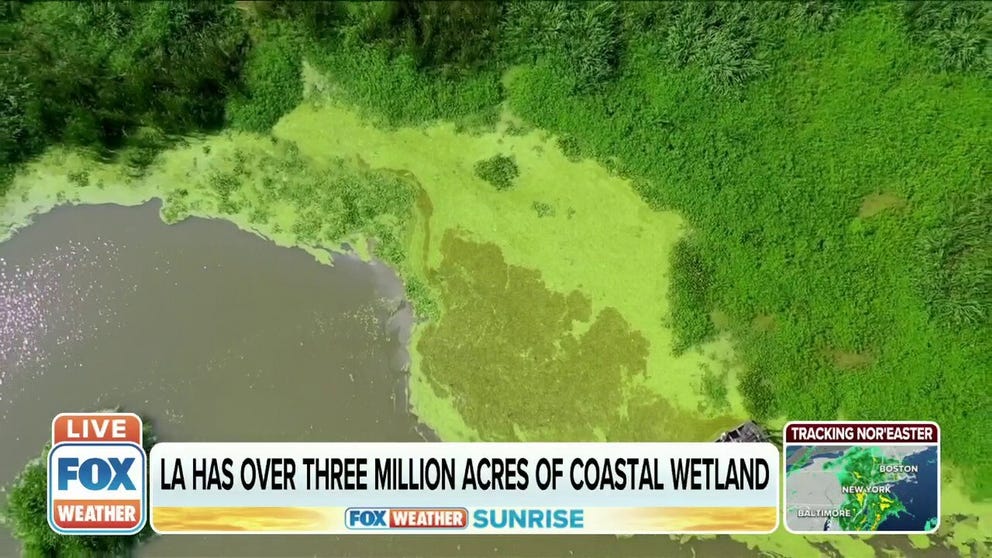'It unravels from the bottom': Scientists work to save Louisiana's shrinking wetlands
Since the 1930's, Louisiana has lost roughly 2,000 square miles of wetlands -- one and a half times the area of the entire state of Rhode Island.
Scientists work to save Louisiana's shrinking wetlands
Since the 1930's, Louisiana has lost roughly 2,000 square miles of wetlands -- one and a half times the area of the entire state of Rhode Island.
GRAND ISLE, La. - Since the 1930s, Louisiana has lost roughly 2,000 square miles of wetlands -- one and a half times the area of the entire state of Rhode Island.
So, to see the erosion, we decided to take a seaplane above the bayous and coastline with the National Wildlife Federation to see the erosion. Our first stop was over Barataria Bay and an estuary on the west side of the Mississippi River -- an area that has lost a lot of coastal wetlands over the last 80 years, says NWF's Alisha Renfrow.
Much of the open water in Barataria Bay was once fertile marshlands, fisheries and wildlife estuaries. But erosion, man-made by oil exploration, flood control levees, harmful chemicals running off into the water from agriculture or Mother Nature's tropical fury are all suspects in the disappearance of the coast.
"Restoration is critical to the future of the Barataria Basin, and there has been a lot of activity to rebuild the wetlands," Renfro said.
Louisiana has deployed billions of dollars -- much of it is funding from the BP oil spill settlement. The goal is to build up Louisiana's barrier islands as the first line of defense from storms and sea-level rise. The mighty Mississippi is pivotal to their success.
"The Mississippi River is kind of a living being in many ways-it changes," Renfro said. "Without intervention -- and even with intervention, it changes and will continue to change because water will go where it wants to go."
They're recreating lost wetlands using a material dredged from the channel of the Mississippi River. It's the fight against time.
Scientists are working to rebuild the land lost in the broad bayous from the air down to the marshes.
"We are trying to restore and expand the footprint of freshwater swamp," said coastal scientist Eva Hillmann. "And we are doing that because want to re-create natural, historical habitat, create habitat for other species but also be able to reduce storm surge to protect the surrounding communities."
There is not a lot of stable land in the marsh, but there are some in pockets. In one location, 40,000 trees have been planted on roughly 200 acres by scientists.
Another challenge: an invasive rodent called Nutria -- there are nearly 20 million of them in Louisiana, and they chew at the bottom of the trees, killing them.
It's something that scientists are fighting against to try and make sure this swamp and marsh grow healthy. And in a state where coastal land is disappearing faster than anywhere in the nation, the challenges are vast.
"If we continue at this rate, to plant all the trees we want to plant will take us 1,000 years," said Kristi Trail with the Pontchartrain Conservancy. "So we are trying to look at new innovative ways to get more trees on the ground and figure out how that land stays here for generations to come."
The stakes are high for the thousands of scientists and engineers working to keep the region afloat, and the pressure is on.
"And if we don't do something and something big, we will lose even more of our state," Renfro said. "It unravels from the bottom; it is the fight for our survival."





